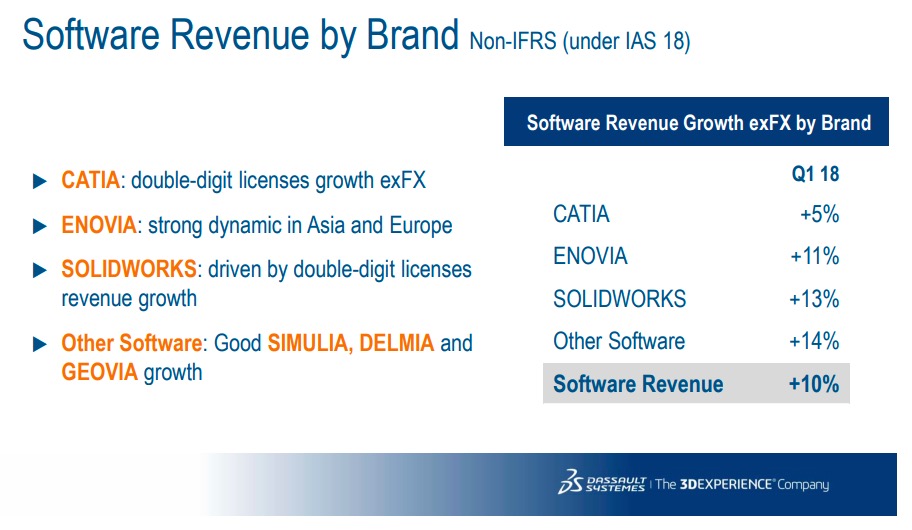
Cadalyst article about Onshape Enterprise by Cyrena Respini-Irwin caught my attention yesterday by the following passage: Onshape argues that product data management (PDM) solutions are obsolete, and rebuts competitors’ criticisms of its own efficacy in addressing CAD users’ needs.
Later in the article, author brings a passage made by Dave Corcoran, Onshape cofounder and vice-president of product.
“They’re [users] being forced to choose between being organized and being fast, and this is really because many of the old systems that are in place with PDM and existing data file management workflows, really block people’s ability to collaborate, especially in the more global workforce,” Feldman continued. In addition, he noted, it’s “incredibly expensive” to provision multiple people in an organization with PDM.
Corcoran believes that Onshape has eliminated the need for PDM — and did so well before the arrival of Enterprise: “Onshape Professional, our middle offering, obsoleted PDM systems,” he commented. PDM has two primary components, Corcoran explained: controlling files, and release management. Onshape makes the former irrelevant by not being file-based, and replaces the latter with its own integrated release management functionality. “PDM system are just not good; [they are] a solution to a problem that exists because [traditional] CAD systems are file-based.” (Integrating other enterprise systems — such as product lifecycle management (PLM) or enterprise resource planning (ERP) — with Onshape Enterprise is possible, by using the Onshape application programming interface [API]).
Long time ago, I published a short blog – Future PDM trajectories. Here was my take back in 2009 about what can happen with PDM: (1) PDM will be integrated and become a natural part of CAD and Design Systems; (2) PDM will provide product data services for enterprise software; (3) PDM will expand beyond PDM into PLM areas. I can see first 2 clearly happening now and you can see examples of that presented by Dave Corcoran in Cadalyst article – PDM functions in Onshape, API integrations with enterprise software.
Does it mean PDM is done and can be retired? I’m not sure. Here are few things I can see see happening in PDM business these days.
Stronger CAD-PDM bundling compared to 2000s
Multi-CAD PDM system was an interesting opportunity in the end of 1990s and beginning of 2000s. CAD vendors acquired some of these companies and made others irrelevant by introducing strong CAD-PDM bundles. Complexity of supporting multiple CAD releases, API availability and competition turned integration business into a services. Multi-CAD PDM integration is still on the top of requirements checklist, but not near to the core business.
Cloud CAD development
For the last 5-7 years, we can see development of new CAD technologies. Full cloud, cloud-enabled, browser-based, server-based… there is no much conclusion around naming, but all these technologies have one thing in common – no CAD files. By eliminating CAD files, all these technologies got a chance to eliminate the main PDM challenge – file management, revisions, shared access and remote data availability.
CAD vendors status quo
Despite complexity of PDM, CAD business is not failing apart and some vendors are growing even double-digits. Here is a chart made by CIMdata summarizing MCAD design business of major players:

Here is slide I captured from Dassault Systemes earning presentation:

All together, existing CAD systems are not showing any signs of weakness, which makes them a strong licensing foundation to hold weak PDM systems from failing apart.
Are we coming to the end of PDM? I don’t think so. The market belongs to few mature CAD and PDM products. Cloud PDM products developed by startups failed to attract existing and new users. Several cloud PDMs are still around, but they are mostly free or niche players.
Cloud CAD options including PDM are the most interesting alternatives to existing PDM monsters. However, cloud CAD have one common disadvantage – your have to get away from your favorite desktop CAD system and existing habits, workflows and tools. I think, CAD status quo is keeping cloud CAD-PDM business from moving faster. It can be said about both Autodesk and Onshape – the most visible players in this space.
What is my conclusion? The biggest problem to retire old inefficient PDM system is CAD status quo. Once company is invested into CAD+PDM bundle, there is not much can be done to move them out. Bundle CAD-PDM products are belonging to major CAD vendors, which makes their displacement very challenging. New cloud CAD-PDM are very interesting products, but their weak point is disconnect from existing desktop market players. Cloud CAD-PDMs are running in isolation against mainstream CAD-PDM products. Out of the box thinking is needed to changes the status quo in this market. Autodesk Fusion/Forge or Onshapre Enterprise are good candidates to do so if they will figure out a recipe for success similar to what Solidworks did back in 1995. But one thing is clear, PDM is probably far from retirement in 2018. Just my thoughts…
Best, Oleg
Want to learn more about PLM? Check out my new PLM Book website.
Disclaimer: I’m co-founder and CEO of OpenBOM developing cloud based bill of materials and inventory management tool for manufacturing companies, hardware startups and supply chain. My opinion can be unintentionally biased.
The post Why PDM is still far from the retirement? appeared first on Beyond PLM (Product Lifecycle Management) Blog.



Be the first to post a comment.